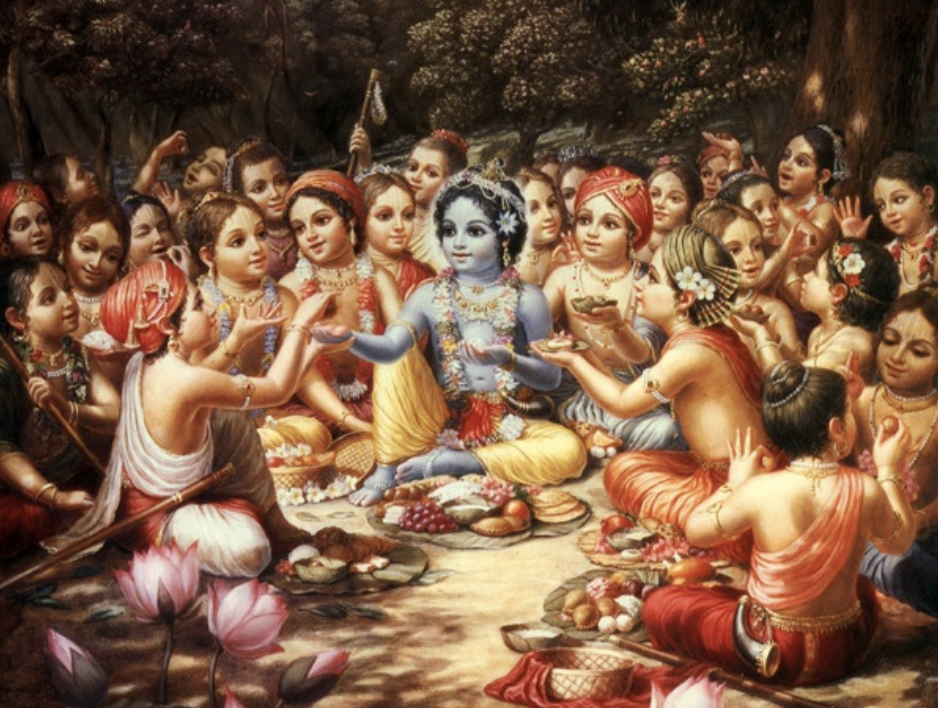Hinduism - Generosity to the Poor?
I admit, as a leftist atheist fanboy of B. R. Ambedkar, I approached this topic with a biased sneer. When I see the word “Hindu” I compulsively flash on navel-gazing meditation, pretzel pretentious yoga, the still-entrenched cruelty of the caste system, and the cow-worshipping intolerance of Narendra Modi’s Hindutva ideology.
I expected the concept of Hindu generosity to be a skinny as an ascetic fakir.
So - I was pleasantly surprised to find a jolly display of generosity in the subcontinent’s ancient religion, ranked #3 in popularity worldwide with 1.2 billion adherents. Kindness towards others is exemplified in two Sanskrit terms and in multiple sacred book references:
#1 Dāna (giving to others) is a top-ranked virtue that’s viewed as a respected highway to spiritual enlightenment. (Why didn’t I know this? I suspect “western” Hinduism ignores dana to focus instead on the self-centered disciplines of yoga and meditation). Dāna believes helping other people is a way to serve god(s) because all beings are interconnected and god(s) dwell within everything. The Hare Krishna cult is dāna devotees who dedicate their lives and possessions to serving the beautiful blue divinity. Most ignoramuses, like me until I researched this, just think Hare Krishnas are white hippies who chanted at airports until they were banned, but they also provide bounteous amounts of free food to the hungry.
The International Society for Krishna Consciousness (ISKON) has a Food for Life (FFL) program that ladles out millions of vegetarian meals daily in 600+ centers in 60+ nations. In India alone, Hare Krishnas provide 1.2 million school children with tasty, hot nutritious food, six days a week - this generous act enables hundreds of thousands of poor children to attend school, because without it, they’d have to drop out to be day laborers, to gain enough rupees to eat.
I’m impressed - wow - and I apologize for my previous snark. Hare Krishna food is also seriously yummy. My wife and I bought their cookbook years ago and we have since followed dozens of recipes delightfully; we made ghee (clarified butter) and paneer (cheese made with curdled milk)… Sorry, I’m hungry and digressing.
Dāna has the power to purify the practitioner’s heart and mind, reduce karmic debt and generate positive karma. The Sanskrit concept dates back to Book 10, Hymn 117 of the Rig Veda, composed 3,000-3,500 years ago: “…Bounteous is he who gives unto the beggar who comes to him in want of food…” The Upanishads, from 2,600+ years ago, lists dāna as a necessary quality for goodness (along with self-restraint and compassion for all sentient creatures) and the importance of dāna to spiritual advancement is regularly mentioned in the mega-epic 2400-year-old Mahabharata. The heroic character Bhishma, for example, asserts in Bhagavata Purana III 99.24 that if people are wealthy, they “should relieve the wants of the indigent.” Mahabharata XIII 59.1 similarly claims “There is none other who does greater good than the one who removed the hunger of those in a difficult situation, helpless, weak and disturbed,” and Bhagavadgita (3.19-26) urges readers to: “work with the welfare of others in mind.”
Hinduism believes, like Islam, that good merit is obtained if one treats the poor with compassion.
#2 Sewa is a Hindu concept related to Dāna but not identical, like twins with different hair color. While dāna is synonymous with charitable alms, sewa is specifically defined as service work that helps the underprivileged, without any intention of gaining reciprocity. Sewa exists in three categories: Tan is hard physical labor that demands strength and perseverance, Mann is donating one’s intellect in speaking, counseling, guiding, teaching, motivating, or active listening, and Dhan is sharing resources, materials, wealth and cash.
Devoting time to serving humanity in sewa is a Hindu tradition advocated by gurus and political leaders. Examples include doctors providing free medical care on specific days of the week, volunteering to assist in disaster relief, or planting trees.
